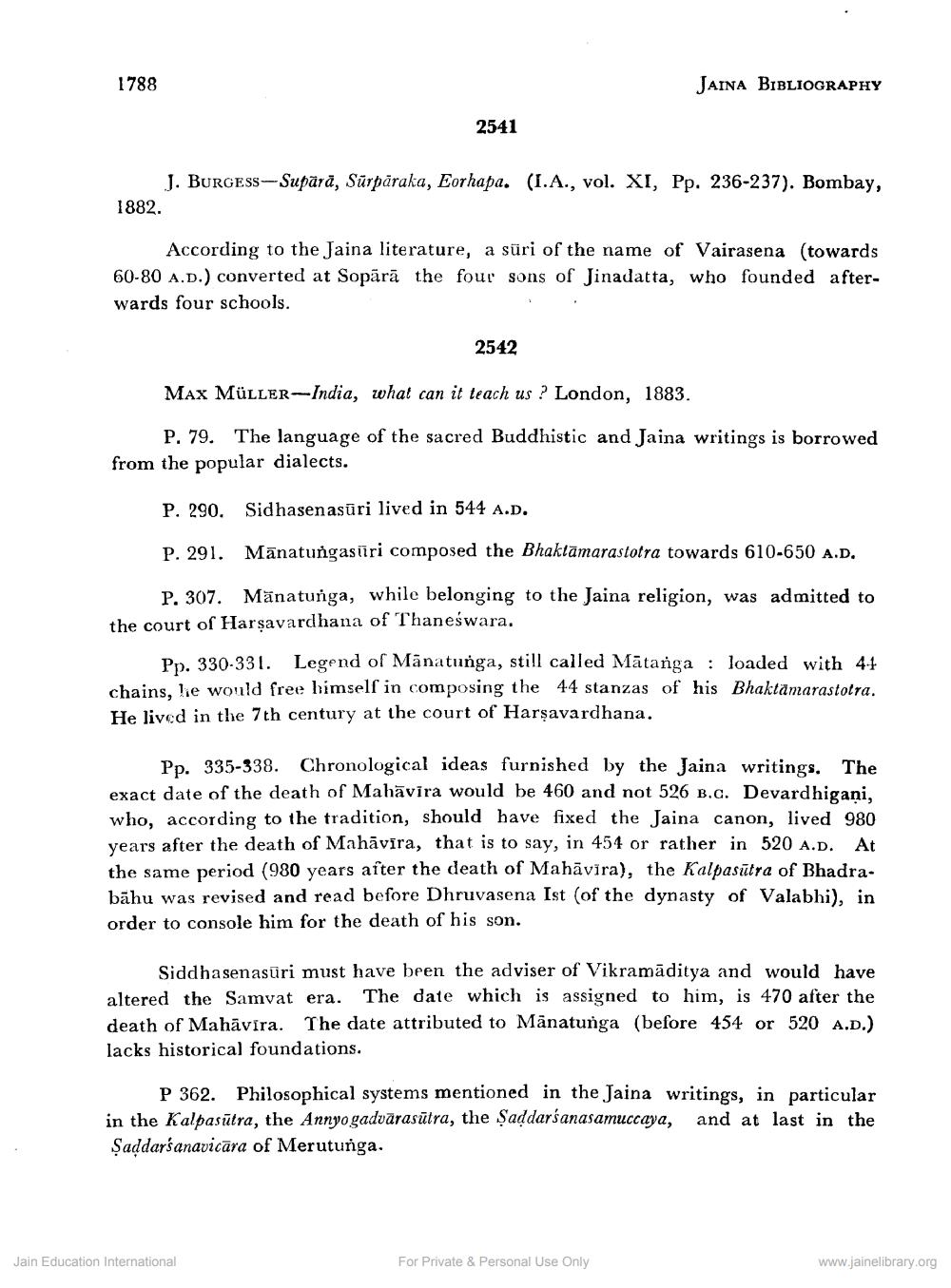________________
1788
JAINA BIBLIOGRAPHY
2541
J. BURGESS-Supärä, Sürpāraka, Eorhapa. (I.A., vol. XI, Pp. 236-237). Bombay, 1882.
According to the Jaina literature, a süri of the name of Vairasena (towards 60-80 A.D.) converted at Sopārā the four sons of Jinadatta, who founded afterwards four schools.
2542
Max Müller-India, what can it teach us ? London, 1883.
P. 79. The language of the sacred Buddhistic and Jaina writings is borrowed from the popular dialects.
P. 290. Sidhasenasūri lived in 544 A.D.
P. 291. Mänatungasüri composed the Bhaktamarastotra towards 610-650 A.D.
P. 307. Mānatunga, while belonging to the Jaina religion, was admitted to the court of Harşavardhana of Thaneswara.
Pp. 330-331. Legend of Manatunga, still called Mātanga : loaded with 4.1 chains, he would free himself in composing the 44 stanzas of his Bhaktamarastotra. He lived in the 7th century at the court of Harşavardhana.
Pp. 335-338. Chronological ideas furnished by the Jaina writings. The exact date of the death of Mahavira would be 460 and not 526 B.C. Devardhigani, who, according to the tradition, should have fixed the Jaina canon, lived 980 years after the death of Mahāvira, that is to say, in 454 or rather in 520 A.D. At the same period (980 years after the death of Mahavira), the Kalpasūtra of Bhadra. bāhu was revised and read before Dhruvasena Ist (of the dynasty of Valabhi), in order to console him for the death of his son.
Siddhasenasüri must have been the adviser of Vikramaditya and would have altered the Samvat era. The date which is assigned to him, is 470 after the death of Mahāvīra. The date attributed to Mänatunga (before 454 or 520 A.D.) lacks historical foundations.
P 362. Philosophical systems mentioned in the Jaina writings, in particular in the Kalpasūtra, the Annyogadvārasūtra, the Saddarśanasamuccaya, and at last in the Şaddarśanavicāra of Merutunga.
Jain Education International
For Private & Personal Use Only
www.jainelibrary.org




